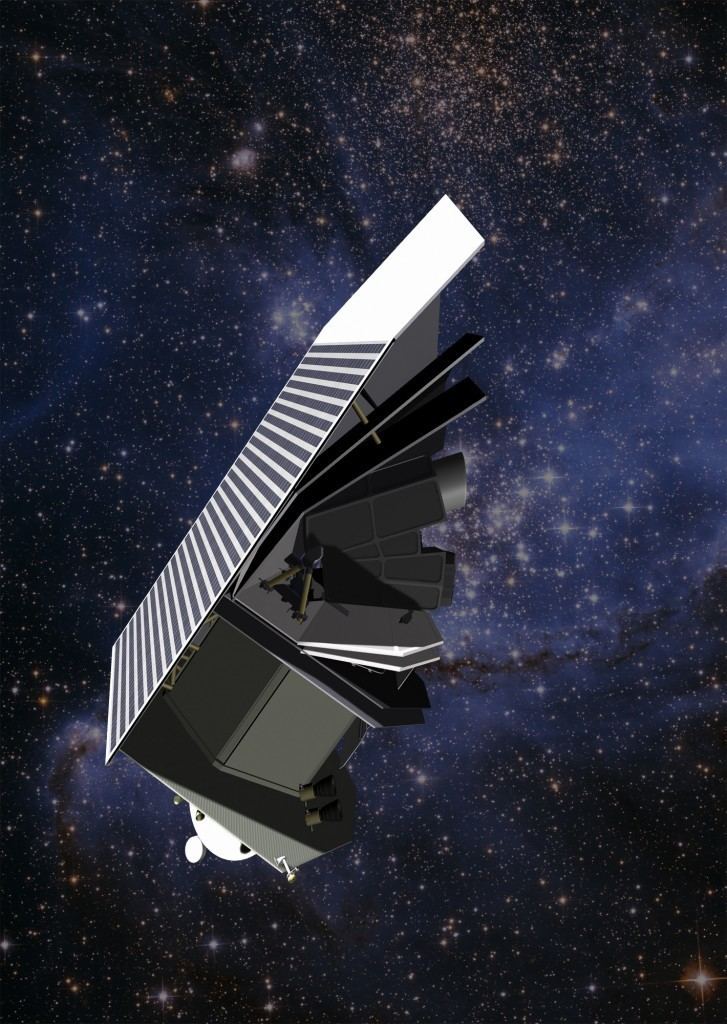Mission type Space Telescope Website SentinelMission.org Manufacturer Ball Aerospace | Mission duration ≤10 years (planned) Launch mass 1,500 kg (3,300 lb) | |
 | ||
The Sentinel Space Telescope is a space observatory currently being designed and built for the B612 Foundation, and under development by Ball Aerospace & Technologies. The B612 Foundation is dedicated to protecting the Earth from dangerous asteroid strikes and Sentinel is the Foundation's first spacecraft to tangibly address that mission.
Contents
The space telescope is being designed to locate 90% of the asteroids greater than 140 metres (460 ft) in diameter that exist in near-Earth orbits. The telescope will orbit the sun in a Venus-like orbit (i.e. between Earth and the Sun), and is being designed to catalog 90% of the large asteroids in Earth’s region of the solar system. The craft will be placed in an orbit similar to that of Venus, allowing it to clearly view the night half of the sky every 20 days, and picking out objects that are currently often difficult, if not impossible, to see in advance from Earth." Sentinel will have an operational mission life of from six and a half to ten years.
History
The B612 project grew out of a one-day workshop on asteroid deflection organized by Piet Hut and Ed Lu at NASA Johnson Space Center, Houston, Texas on October 20, 2001. Participants Rusty Schweickart, Clark Chapman, Piet Hut, and Ed Lu established the B612 Foundation on October 7, 2002. The Foundation originally planned to launch Sentinel by December 2016 and to begin data retrieval no later than 6 months after successful positioning. In April 2013, the plan had moved out to launching on a SpaceX Falcon 9 in 2018, following preliminary design review in 2014, and critical design review in 2015.
As of April 2013, B612 is attempting to raise approximately $450 million in total to fund the total development and launch cost of Sentinel, at a rate of some $30 to $40 million per year. That funding profile excludes the advertised 2018 launch date.
Mission
Unlike similar projects to search for near-Earth asteroids or near-Earth objects (NEOs) such as NASA's Near-Earth Object Program, Sentinel will orbit between Earth and the Sun. Since the Sun will therefore always be behind the lens of the telescope, it will never inhibit the telescope's ability to detect NEOs and Sentinel will be able to perform continuous observation and analysis.
Sentinel is anticipated to be capable of detecting 90% of the asteroids greater than 140 meters in diameter that exist in Earth's orbit, which pose existential risk to humanity. The B612 Foundation estimates that approximately half a million asteroids in Earth's neighbourhood equal or exceed the one that struck Tunguska in 1908. It is planned to be launched atop the Falcon 9 rocket designed and manufactured by the private aerospace company SpaceX in 2019, and to be maneuvered into position with the help of the gravity of Venus. Data gathered by the Sentinel Project will be provided through an existing network of scientific data-sharing that includes NASA and academic institutions such as the Minor Planet Center in Cambridge, Massachusetts.
Given the satellite's telescopic accuracy, Sentinel's data has been speculated to prove valuable for future missions in such fields as asteroid mining.
Specifications
The telescope measures 7.7 metres (25 ft) by 3.2 metres (10 ft) mass 1,500 kilograms (3,300 lb) and will orbit the Sun at a distance of 0.6 to 0.8 astronomical units (90,000,000 to 120,000,000 km; 56,000,000 to 74,000,000 mi) approximately in the same orbital distance as Venus. It will employ infrared astronomy methods to identify asteroids against the cold of outer space. The B612 Foundation is working in partnership with Ball Aerospace to construct Sentinel's 0.51 m (20 inches) aluminum mirror, which will capture the large field of view. "Sentinel will scan in the 7- to 15-micron wavelength using a 0.5-meter infrared telescope across a 5.5 by 2-deg. field of view. The [infrared] IR array will consist of 16 detectors, and coverage will scan a 200-degree, full-angle field of regard."
Features
Key features include:
